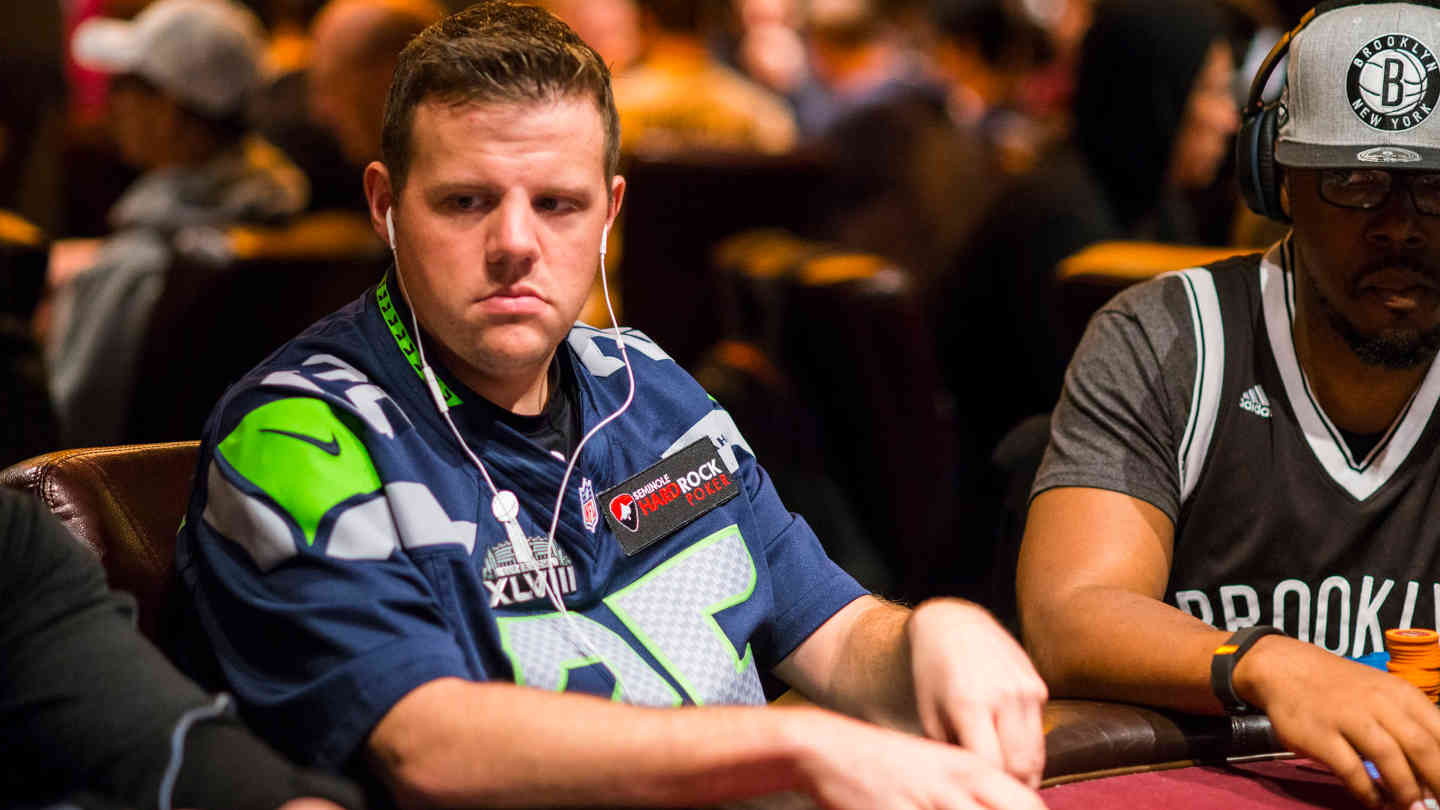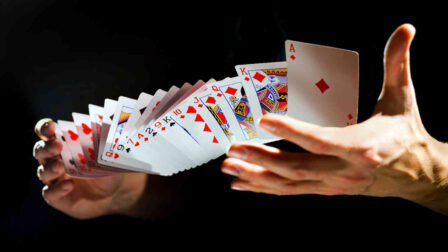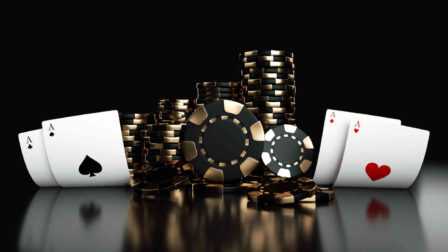Does a Full House Beat a Flush in Poker & Why?
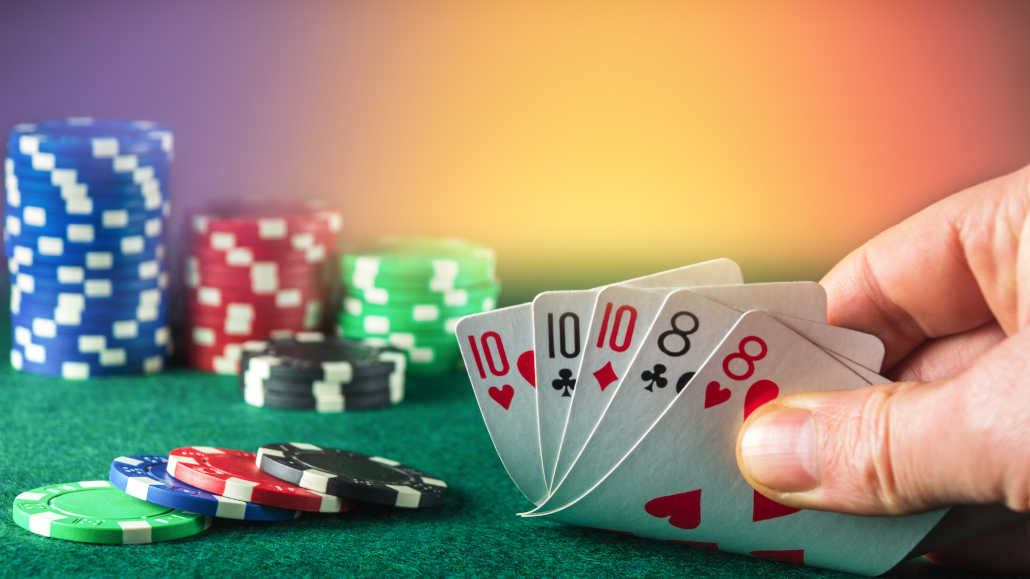
7 minutes
Last Updated: November 30, 2022
For players that are new to poker, it can often be confusing and time-consuming to learn all the different hand rankings and rules.
Questions such as does a full house beat a flush or does a flush beat a full house often pop up in the heads of newbie poker players.
One of the best ways to learn which hand beats which hand in poker is to learn the logic behind how hands are ranked in poker, and in this article we will explain just that.
If you are here for the short answer, yes a full house beats a flush in poker.
If, however, you want to learn more and find out exactly why a full house is a stronger hand than a flush, keep on reading!
Flush in Poker
Before we jump into explaining what beats what in Texas Hold’em we will first talk about different hand combinations and the math behind them.
Thanks to its unique features, the flush is one of the poker hand combinations that are easy to recognize.
In live and online poker, the flush is a term used for a card combination that consists of five cards that are all of the same suit, with at least one of them being non-sequential.
Example of flush combinations in poker:
- A♦Q♦7♦5♦4♦ – an Ace-high flush
- Q♠J♠9♠7♠6♠ – a Q-high flush
A flush combination that consists of 5 sequential cards is called a straight flush, and it is very important to distinguish these two combinations as they have different hand strengths in poker.
Here are two examples of straight flush combinations.
- Q♥J♥10♥9♥8♥ – a Q-high straight flush
- 6♦5♦4♦3♦2♦ – a 6-high straight flush
Finally, the last flush, called the Royal Flush is not only the strongest flush combination but it is also the strongest 5-card combination in poker.
A Royal Flush is a five-card combination that has five sequential cards of the same suit starting from a ten and ending with an Ace.
The four possible combinations of Royal Flush in poker:
- A♠K♠Q♠J♠10♠ – Royal Flush of spades
- A♥K♥Q♥J♥10♥ – Royal Flush of hearts
- A♦K♦Q♦J♦10♦ – Royal Flush of diamonds
- A♣K♣Q♣J♣10♣ – Royal Flush of clubs
The main reason why all of these flush combinations are separated into different categories is the number of possible combinations. Each of these poker flushes has a different number of possible combinations and ranks differently in the poker hand rankings.
The Total Number of Flush Combinations in Poker
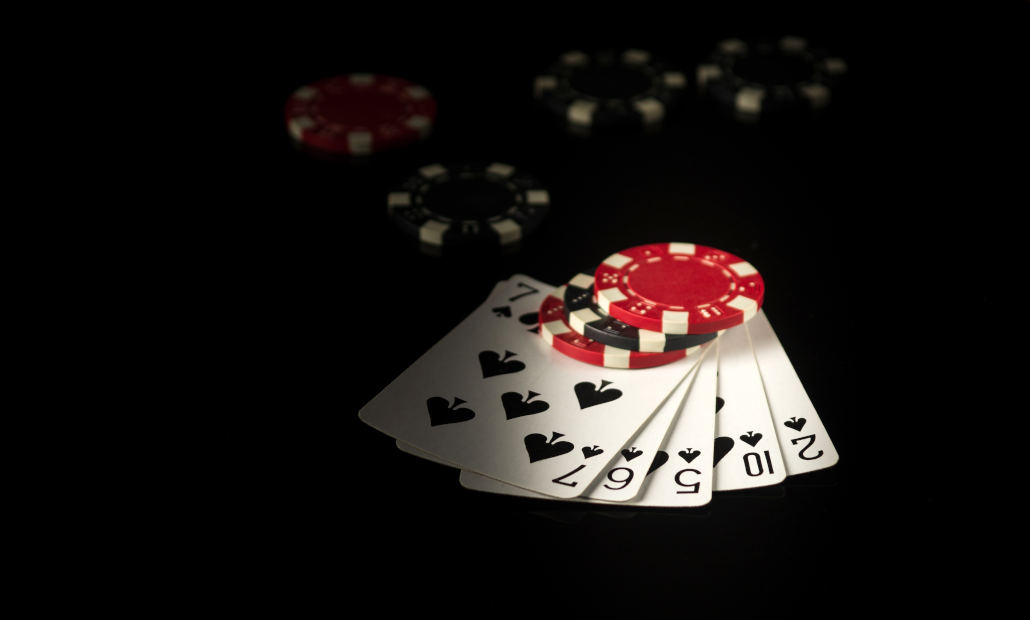
In the standard deck of cards there are four different suits (hearts, diamonds, spades, and clubs), and each of the suits has 13 different cards rankings (A, K, Q, J, T, 9, 8, 7, 6, 5, 4, 3, 2).
Based on the information provided above we can calculate that there are:
- 4 possible royal flush combinations (1 for each suit)
- 36 possible five-card straight flush combinations (9 for each suit)
- 5,108 possible five-card flush combinations
Since hands in poker are ranked based on the number of possible combinations (the fewer the number of possible combinations), the stronger the hand, we can conclude that with only 4 possible combinations, the Royal Flush is the rarest and strongest 5-card combination in poker.
Furthermore, the second strongest flush with 36 possible combinations is the straight flush and this 5-card combination is also the second-strongest hand in poker.
With 5,108 possible combinations, the flush is the weakest of all flush combinations, and this number of combinations makes the flush the 5th strongest hand in poker.
Full House in Poker
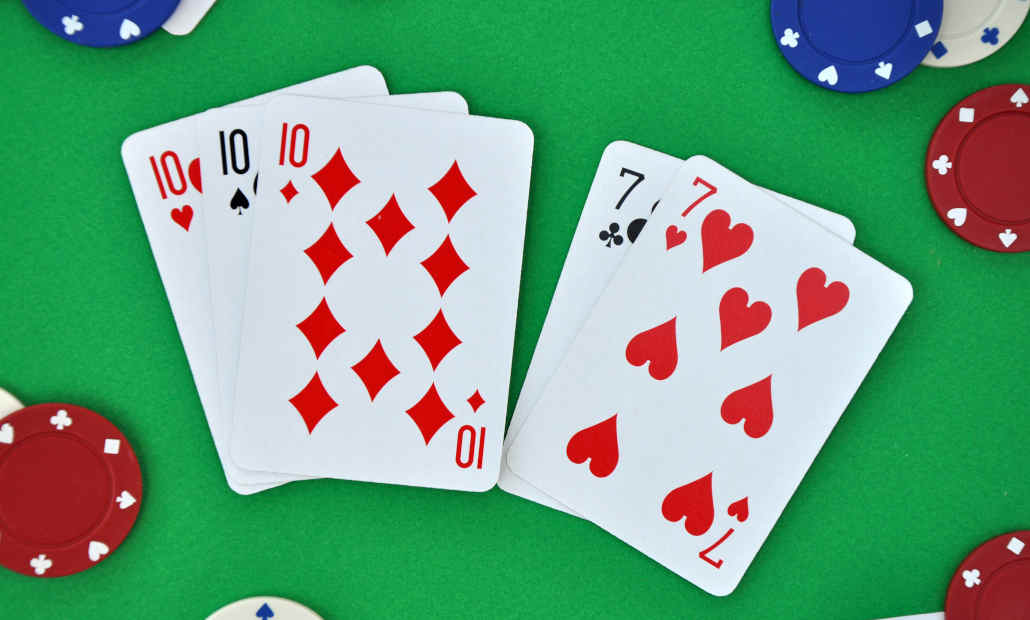
In poker, a full house is a term that is used to describe a five-card combination that contains a combination of trips and a pair that is three cards of one rank and two cards of another rank. Another term that poker players use for the full house is boat.
Two examples of a full house in poker:
- 8♠8♣8♦K♣K♦ – eights full of kings
- A♣A♦A♥6♣6♦ – aces full of sixes
When it comes to ranking full house combination, players first look at the ranking of the trips and then the ranking of the pair in the combination.
For example, in the examples above, the second combination (aces full of sixes) outranks the first combination (eights full of kings) because the rank of the trips in the second combination (A) outranks the rank of the trips in the first combinations (8).
New players will often make the mistake of thinking that a full house that contains the highest-ranked cards is stronger, however, this is only true if these cards contain the trips part of the full house.
Comparing Full Houses in Poker
For example, if we look at these two combinations:
- 6♠6♦6♣5♣5♦ – sixes full of fives
- 4♠4♣4♠K♣K♠ – fours full of kings
In this case, although the kings are the highest ranked cards in these two combinations, they are not taken into consideration because full house combinations are ranked based on the rank of the trips, and this is why the first combinations outrank the second.
Now, there are situations in which the rank of the pair in the full house combination is used to determine which full house is stronger. These situations happen in hands where multiple players use the same cards from the board to complete their full house combinations.
For example:
- Player A holds K♠9♦
- Player B holds K♣10♠
- The board is K♥K♦9♠10♥A♣
- The best 5-card combination that Player A can make is K♥K♦K♠9♠9♦ – kings full of nines
- The best 5-card combination that Player B can make is K♥K♦K♠10♠10♥ – kings full of tens
Since the rank of the trips is the same in both combinations, the rank of the pair is used to determine which hand is stronger.
In this case, Player B has a pair of tens and Player A has a pair of nines to go with their three kings. Since a pair of tens outranks a pair of nines in poker, the kings full of tens outranks the kings full of nines.
The Total Number of Full House Combinations in Poker
If we know that poker is played with a standard 52-card deck we can calculate that there are:
- 3,744 possible full house combinations
- 156 different ranks of these combinations
- 24 individual full house combinations
For example:
Sixes full of fives – 6 6 6 5 5 is one full house combination that can be created in 24 different ways based on what suits are used.
If we multiply the number of individual full house combinations (24) by the number of different full house ranks (156), we end up with the number of possible full house combinations (3744).
Does a Full House Beat a Flush in Poker?
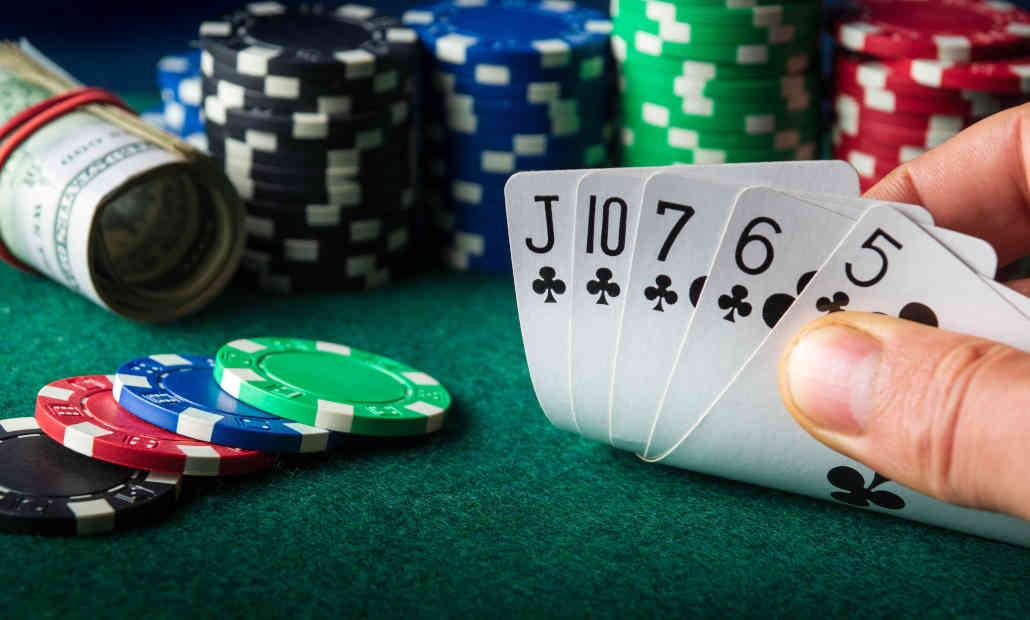
As we can see from the table below, in Texas Hold’em a full house outranks a flush.
This is because all hand rankings in poker are based on the number of possible combinations; the lower number of combinations a hand has, the stronger it is.
| Hand | Combinations | Probability | Odds |
| Royal Flush | 4 | 0.000154% | 649,739-to-1 |
| Straight Flush | 36 | 0.00139% | 72,192-to-1 |
| Four of a Kind | 624 | 0.02401% | 4,164-to-1 |
| Full House | 3,744 | 0.1441% | 693-to-1 |
| Flush | 5,108 | 0.1965% | 509-to-1 |
| Straight | 10,200 | 0.3925% | 254-to-1 |
| Three of a Kind | 54,912 | 2.1128% | 46-to-1 |
| Two Pair | 123,552 | 4.7539% | 20-to-1 |
| One Pair | 1,098,240 | 42.2569% | 1.37-to-1 |
Based on this principle, the Royal Flush is the strongest hand in poker as there are only 4 possible combinations of this hand, and one pair is the weakest made hand in poker since there are 1,098,240 possible combinations of this hand.
Math Behind the Full House & the Flush In Poker
Based on the number of possible flush combinations (5,108) in poker we can calculate that there is a 3.03% chance that a player will make a 5-card combination that contains a flush in any given hand.
And, based on the number of possible full house combinations (3,744) we can calculate that there is a 2.6% chance that a player quill makes a 5-card combination that contains a full house in any given hand.
This means that, on any given hand, there is around a 0.4% higher chance that you will make a flush than a full house, which makes a full house more precious since this combination is harder to achieve.
Math Behind the Full House & the Straight Flush in Poker
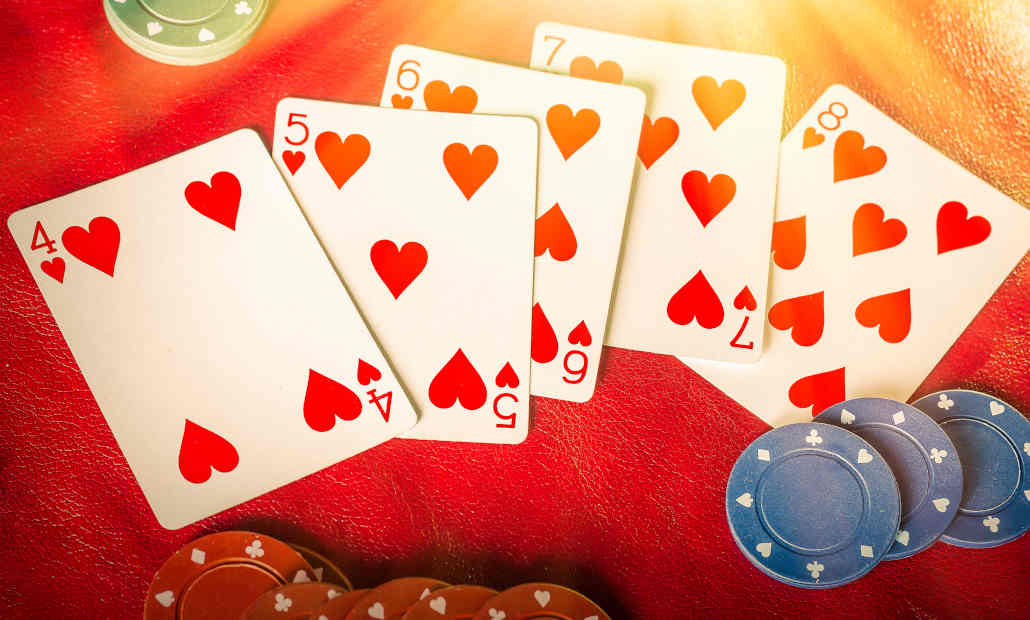
Even though a full house outranks a flush in poker (five cards that are all of the same suit, with at least one of them being non-sequential), it does not outrank the straight flush (a flush combination that consists of 5 sequential cards).
Here are the numbers behind the rule:
There are 36 possible combinations of straight flush in poker (not including the four combinations of royal flush), which means that there is a 0.0279% chance that a player will make a 5-card combination containing a straight flush on any given hand.
When we compare this with the 3.03% chance that players have of getting a full house on any given hand, we can see that there is a much higher chance of getting a full house than a straight flush.
Because there is a lower chance of completing a straight flush than a full house, a straight flush outranks a full house in poker.











